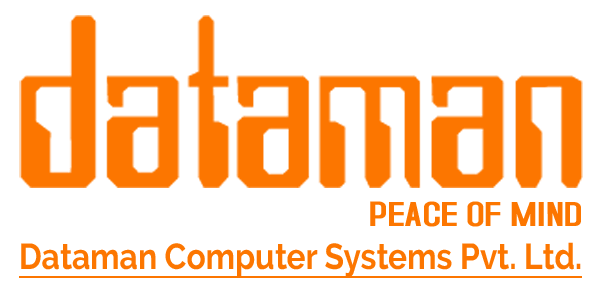- +91 9511117684
- shweta@dataman.in

Table of Contents
Post Views: 7,574
A single missing supply in hospital setup can mean the difference between life and death. Yet, an alarming 46% of hospitals still rely on manual inventory tracking methods, leading to stockouts, wastage, and compromised patient care.
The stakes have never been higher for hospital inventory management. With rising operational costs and increasing patient demands, healthcare facilities can’t afford the luxury of inefficient supply chain practices. But there’s hope – modern inventory management solutions are revolutionizing how hospitals track, manage, and optimize their medical supplies, resulting in up to 30% cost savings and dramatically improved patient outcomes.
In this guide, we’ll walk you through actionable best practices for hospital inventory management and explore how an HMIS solution can be the game-changer your facility needs.
Read Also: Understanding IPD vs OPD | Difference Between IPD and OPD
Why Hospital Inventory Management Matters
Managing inventory in a hospital goes beyond just tracking supplies. Here’s why it’s crucial:
Patient Safety
Adequate inventory of medications and medical supplies is critical for patient care. Stockouts can lead to delays in treatment or the use of alternative, less effective options, compromising patient safety and outcomes.
Cost Control
Effective inventory management balances stock levels. Overstocking ties up funds that could be better used elsewhere, while understocking can result in higher emergency purchase costs, impacting the hospital’s financial health.
Regulatory Compliance
Hospitals must adhere to laws and regulations regarding inventory, especially for controlled substances. Accurate tracking ensures compliance with audits, reducing the risk of fines, legal issues, or sanctions.
Operational Efficiency
A streamlined inventory system helps maintain continuous workflows, ensuring that necessary supplies and equipment are always available when needed. This minimizes delays, enhances productivity, and supports the smooth operation of hospital departments.
Challenges in Hospital Inventory Management
High Inventory Volume: Hospitals manage vast inventories of thousands of items, ranging from everyday supplies to expensive equipment. Tracking all these items efficiently is a complex task, requiring accurate, real-time data to avoid shortages or overstocking.
Department Silos: Inventory management data is often kept separate within different hospital departments, leading to fragmented information. This makes it difficult to have a unified view of stock levels, causing inefficiencies and delays in decision-making.
Manual Processes: Many hospitals still rely on paper records or spreadsheets for inventory tracking. These methods are prone to human error, slow data entry, and inconsistencies, increasing the risk of stockouts, overstocking, and wasted resources.
Expiring Items: Many hospital supplies, especially medications, have expiration dates. These items need constant monitoring to ensure timely usage or disposal, avoiding wastage or legal issues related to expired products.
Budget Constraints: Hospitals often operate under tight financial constraints. Balancing the need for an adequate inventory of supplies with limited budgets requires careful planning, prioritization, and optimization of resources to prevent shortages or over-expenditures.
Read Also: 7 Key Metrics to Track with OPD Management Software
Best Practices for Hospital Inventory Management
Adopt an Inventory Organization Plan
We recommend implementing a structured organization system that categorizes medical supplies based on usage frequency, expiration dates, and critical importance. Our experience shows that using the ABC analysis method works effectively:
| Category | Importance | Monitoring Frequency | Example Items |
|---|---|---|---|
| A Items | Critical | Daily | Emergency medicines, surgical supplies |
| B Items | Moderate | Weekly | Standard medications, PPE |
| C Items | Routine | Monthly | Office supplies, non-critical items |
Automate Inventory Tracking with HMIS Implementing an HMIS solution allows you to:
- Monitor inventory in real-time.
- Set up automatic reorder alerts for low stock.
- Reduce errors caused by manual entries.
With a dedicated inventory management module in an HMIS, you gain a centralized system that connects all departments, ensuring accurate stock levels across the hospital.
Categorize Inventory Effectively
Group items into categories such as consumables (e.g., gloves, syringes), medications, and equipment. Sub-categorize further based on usage, department, or shelf life. This categorization simplifies tracking and helps you prioritize critical stock.
Conduct Regular Audits
Inventory audits help identify discrepancies, prevent stock theft, and ensure compliance with regulations. Schedule periodic checks for high-value or high-risk items, especially controlled substances.
Implement Just-in-Time (JIT) Inventory
JIT inventory ensures you only order and stock items as needed, reducing waste and overstocking. An HMIS can integrate with suppliers to streamline this process, ensuring timely deliveries based on current stock levels.
Track Expiry Dates
Expired medications and supplies can lead to compliance violations and financial loss. Use an HMIS to track expiry dates and receive alerts well in advance to replace expiring items.
Use Data-Driven Insights
Leverage data analytics to forecast inventory needs based on usage trends. For example, an HMIS can analyze past data to predict seasonal demand for specific items, helping you prepare better.
Train Staff on Inventory Protocols
Even the best systems can’t succeed without proper implementation. Train staff on inventory management workflows, including how to use the HMIS system effectively and follow inventory protocols.
Read Also:Top 12 Features to Look for in a Hospital Management System
Benefits of Inventory Management for Healthcare Organizations
When healthcare organizations implement robust inventory management systems, they can reduce waste by up to 30% and improve staff productivity by 40%. This systematic approach to managing supplies ensures both operational excellence and regulatory compliance.
Avoid Supply Chain Issues
- Real-time inventory tracking prevents stockouts
- Automated reorder points maintain optimal stock levels
- Early warning systems for potential supply disruptions
- Multiple vendor relationships management
Accurate Budgeting
- Data-driven forecasting for supply needs
- Cost tracking and analysis
- Waste reduction through precise ordering
| Budget Impact Area | Improvement Potential |
|---|---|
| Stock Holdings | 20-30% reduction |
| Order Processing | 40-50% time savings |
| Waste Management | 15-25% reduction |
Patient Safety
- Expired product tracking and removal
- Lot number tracking for recalls
- Ensures critical supplies availability
- Temperature monitoring for sensitive items
Staff Shortages and Improving Efficiency
- Automated inventory counts
- Mobile scanning capabilities
- Streamlined workflow processes
- Reduced manual documentation
Decrease Human Error
- Barcode scanning accuracy
- Automated data entry
- Digital verification systems
- Real-time error detection
Compliance
- Regulatory documentation automation
- Audit trail maintenance
- Standards adherence tracking
- Certification management
How HMIS Improves Hospital Inventory Management
We understand that implementing efficient hospital inventory management systems is crucial. Our Hospital Management Information System (HMIS) solution offers comprehensive features that transform hospital inventory management:
Key Features of HMIS System
- Real-time inventory tracking and monitoring
- Automated reordering based on preset thresholds
- Expiration date management and alerts
- Integration with existing hospital management systems
- Mobile scanning capabilities
- Advanced analytics and reporting
HMIS Performance Metrics
| Metric | Average Improvement |
|---|---|
| Inventory Accuracy | 99.9% |
| Stock-outs Reduction | 85% |
| Cost Savings | 23% annually |
| Time Saved on Manual Tasks | 75% |
| Waste Reduction | 40% |
Read Also: Pharmacy Inventory Management: Optimizing Safety, Compliance, & Efficiency
Conclusion
Hospital inventory management may seem like a daunting task, but with the right tools and strategies, it becomes manageable—and even transformative. Adopting best practices like automation, regular audits, and data-driven insights can help hospitals maintain optimal stock levels, cut costs, and, most importantly, deliver better patient care.
An HMIS solution, like ours, takes hospital inventory management to the next level by centralizing and automating processes, giving you complete control and visibility. Ready to streamline your hospital’s inventory management? Contact us today to see how our HMIS can help.
FAQs
What is hospital inventory management?
Hospital inventory management involves tracking, controlling, and optimizing the use of medical supplies, medications, and equipment to ensure seamless operations and patient care.
Why is an HMIS important for inventory management?
An HMIS automates inventory tracking, reduces errors, and provides real-time data, ensuring accurate stock levels and streamlined procurement processes.
How does an HMIS help with regulatory compliance?
An HMIS keeps detailed records and audit trails, making it easier to comply with regulations, especially for tracking controlled substances and expired items.
Can HMIS solutions integrate with suppliers?
Yes, modern HMIS systems integrate with suppliers to automate order placements, track deliveries, and maintain optimal stock levels.
0

